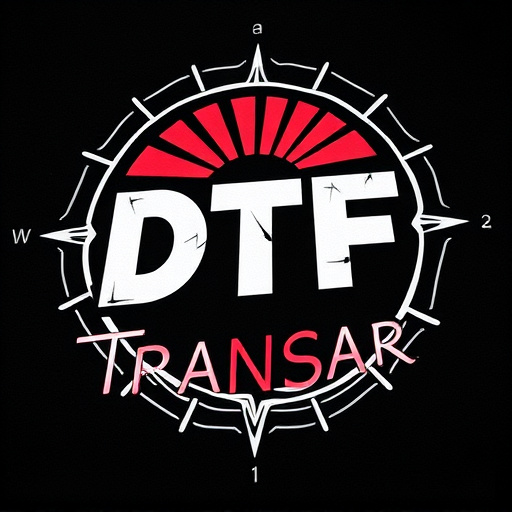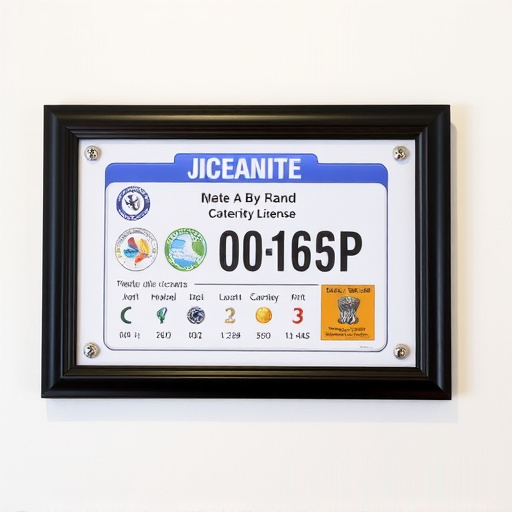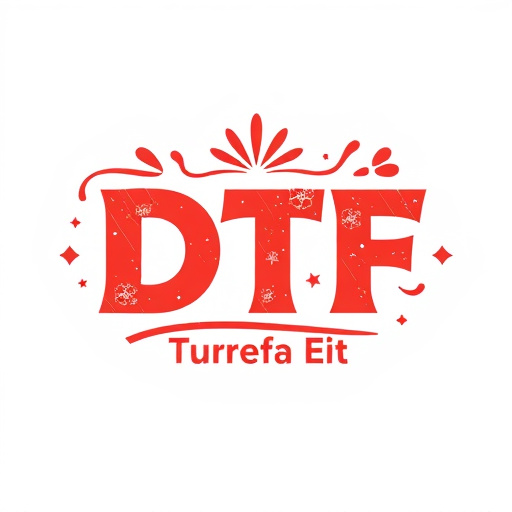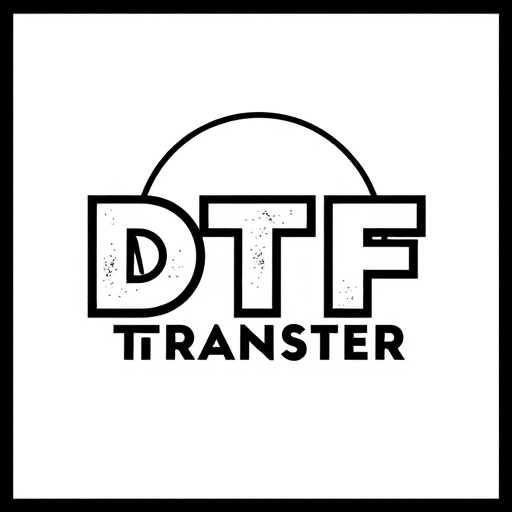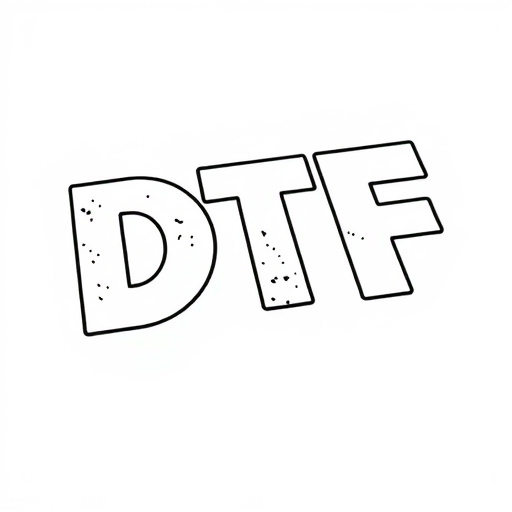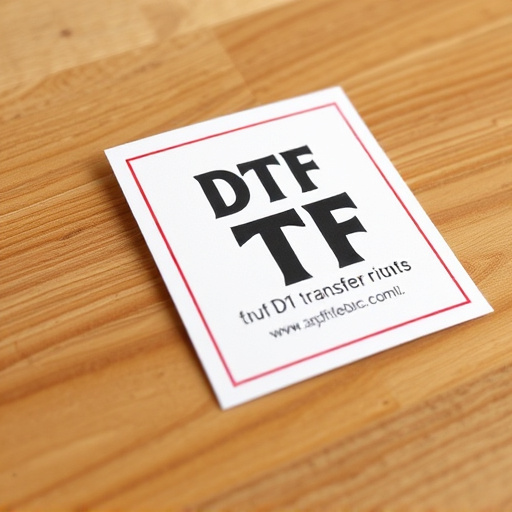Direct-to-film (DTF) transfers are a cutting-edge solution for creating high-quality prints on various surfaces with unparalleled precision and versatility. DTF involves printing ink directly onto a film or substrate, offering vibrant designs on textiles, metal, and more. Transfers are classified by width and thickness, guiding manufacturers in material selection. Standard sizes like A4 and 24"x36" sheets ensure accurate cutting and application. High-quality DTF prints are durable, water-resistant, suitable for outdoor use, cost-effective, and customizable, making them ideal for professional printing, branding, signage, and vehicle graphics. Best practices include using vector graphics at the correct resolution, calibrated color profiles, and regular material testing to ensure consistent color accuracy across all DTF runs.
Direct-to-film (DTF) transfers have revolutionized printing, offering unparalleled versatility and quality. This article explores the intricacies of DTF technology through a unique lens—categorization by dimensional measurements. We delve into the process, from understanding the basics to navigating the vast array of standard sizes available for DTF prints. Discover the benefits across various applications and learn essential best practices to ensure accurate, high-quality results in your next DTF printing project.
- Understanding Direct-to-Film (DTF) Transfers: An Overview
- Categorization of DTF Transfers Based on Dimensional Measurements
- Standard Sizes for DTF Prints: A Comprehensive Guide
- Benefits and Applications of High-Quality DTF Transfers
- Choosing the Right Material for Your DTF Printing Project
- Best Practices for Ensuring Accurate DTF Prints
Understanding Direct-to-Film (DTF) Transfers: An Overview

Direct-to-film (DTF) transfers are a cutting-edge method of creating high-quality prints directly onto various surfaces, eliminating the need for traditional intermediate steps. This innovative process has revolutionized the way we reproduce images and designs, offering unparalleled precision and versatility. DTF involves printing ink directly onto a film or substrate, which is then cured to create a durable, long-lasting print.
DTF transfers have gained immense popularity due to their ability to produce vibrant, detailed prints on a diverse range of materials, from textiles to metal. This technology allows for precise control over dimensional measurements, ensuring that each print maintains the original design’s integrity. Whether it’s for custom apparel, signage, or decorative items, DTF printing offers a game-changing solution for businesses and creatives alike, enabling them to bring their designs to life with exceptional accuracy and visual appeal.
Categorization of DTF Transfers Based on Dimensional Measurements

Direct-to-film (DTF) transfers are categorized based on their dimensional measurements, offering a standardized approach to understanding and comparing different types of DTF prints. These categories primarily focus on two key dimensions: width and thickness, allowing for precise classification of various DTF transfer materials and applications.
The width of a DTF transfer refers to the lateral dimension, typically measured in millimeters or inches, which determines the area covered by the print. This measurement is crucial for ensuring that the design fits within the desired space on the final product. Thickness, on the other hand, signifies the depth or dimensionality of the transfer film itself, often specified in microns (or micrometers). Understanding these dimensions enables manufacturers and designers to select the appropriate DTF material for specific projects, considering factors like opacity, adhesion, and the level of detail required for the intended application.
Standard Sizes for DTF Prints: A Comprehensive Guide

Direct-to-film (DTF) transfers have revolutionized the way we print and reproduce images, offering a versatile and high-quality option for various applications. When it comes to DTF printing, understanding standard sizes is essential for ensuring optimal results. Typically, DTF transfer films come in several common dimensions, catering to different needs and projects. These standards are widely adopted across the industry, making it easier for printers and enthusiasts alike to choose the right size for their DTF prints.
The most prevalent sizes include A4, A3, and larger formats like 24-inch by 36-inch (610mm x 915mm). Each size has its advantages; smaller sheets are ideal for detailed work and personal projects, while larger formats accommodate full-body suits or murals. Knowing these standard dimensions allows for precise cutting and application of the DTF transfer film, guaranteeing sharp and accurate prints on a variety of surfaces.
Benefits and Applications of High-Quality DTF Transfers
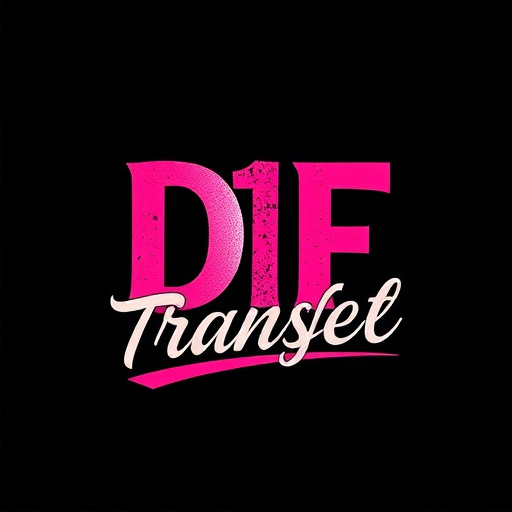
High-quality Direct-to-Film (DTF) transfers offer a range of benefits for various applications. The precision and accuracy of these transfers ensure that images, logos, and designs are reproduced with exceptional detail and color accuracy, making them ideal for professional printing and branding purposes. DTF technology allows for direct application onto a wide array of surfaces, from plastic and metal to glass and wood, expanding the creative possibilities for designers and artisans.
DTF prints are known for their durability and water-resistance, making them suitable for outdoor signage, vehicle graphics, and promotional items that require longevity in diverse environments. The fast turnaround time and cost-effectiveness of DTF transfers make it a preferred choice for businesses and individuals seeking high-quality printing solutions without breaking the bank. Furthermore, the versatility of DTF allows for easy customization and on-demand production, catering to dynamic marketing needs and ensuring that every print is tailored to its intended use.
Choosing the Right Material for Your DTF Printing Project

When embarking on a DTF (Direct-to-film) transfer project, selecting the appropriate material is a pivotal step that can significantly impact the final print quality. The choice of material depends on various factors, including intended use, desired aesthetics, and budget. For instance, if you’re creating DTF prints for decorative purposes, a high-quality vinyl with excellent color fidelity and durability might be the ideal pick. On the other hand, for applications like signages or labels, a more robust material like polycarbonate or acrylic could offer superior performance in outdoor environments.
Understanding the specifications of different materials is key to making an informed decision. Factors such as thickness, gloss level, and adhesive properties should be considered. Thicker materials may provide better protection against wear and tear but might also affect application ease. Glossy finishes enhance visual appeal but can make prints more prone to smudging. Moreover, understanding the adhesive properties ensures that the DTF transfer adheres securely to various surfaces, from glass to metal or textiles.
Best Practices for Ensuring Accurate DTF Prints
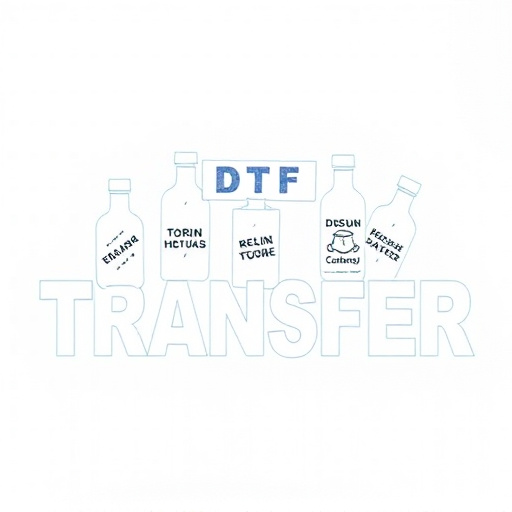
To ensure accurate and high-quality DTF Transfers and prints, several best practices should be implemented. Firstly, prepare your artwork with precision; use vector graphics for crisp lines and sharp details, ensuring all elements are at the correct resolution for printing. Vector formats like SVG or EPS guarantee that your design will remain clear and free from pixelation when scaled up for DTF Printing.
Additionally, color management is vital. Utilize a calibrated color profile to match your design software with your printing device, ensuring colors appear as intended during the DTF Transfer process. Regularly test prints on various materials to calibrate and adjust settings, maintaining consistency in color accuracy across different runs.



